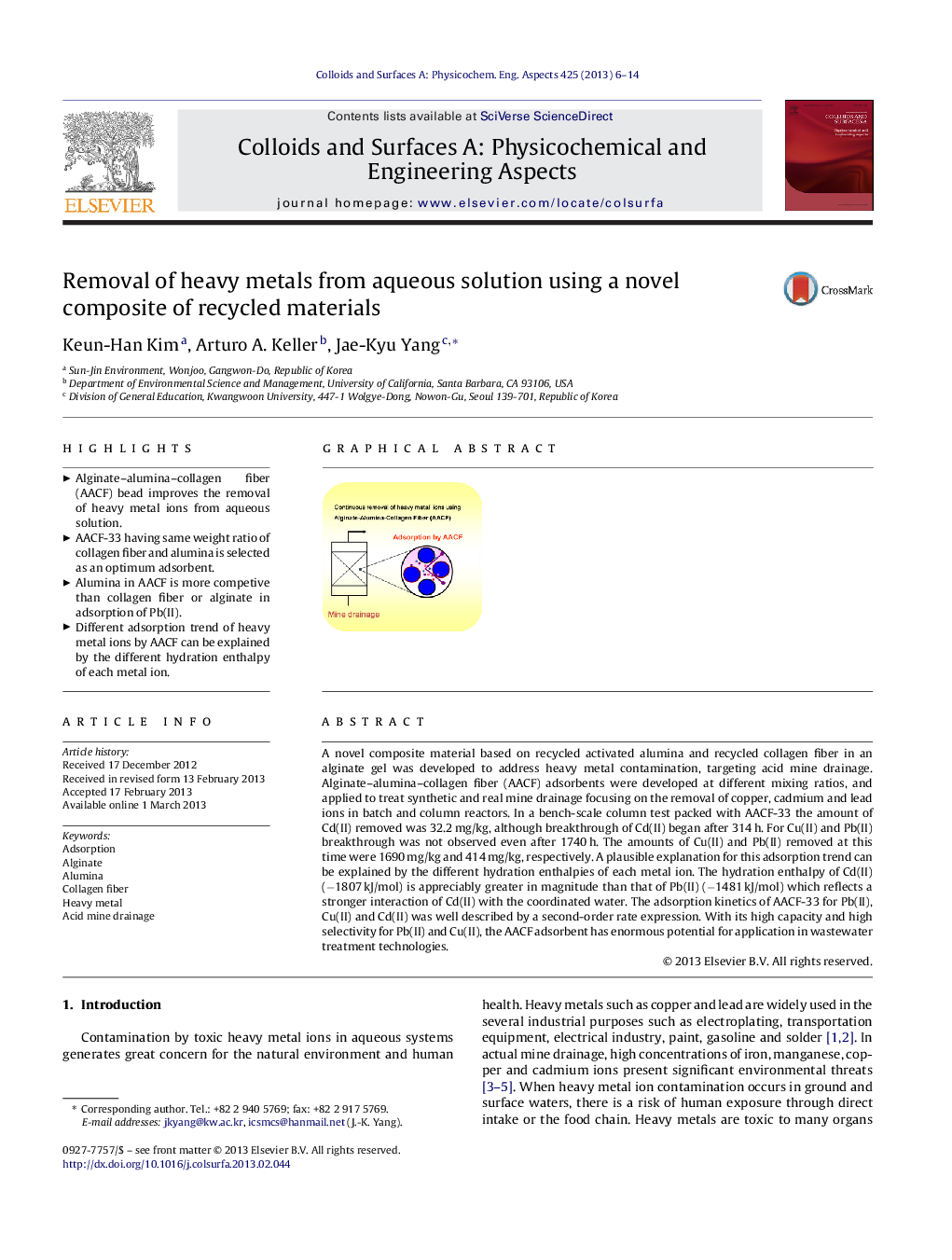| Article ID | Journal | Published Year | Pages | File Type |
|---|---|---|---|---|
| 593592 | Colloids and Surfaces A: Physicochemical and Engineering Aspects | 2013 | 9 Pages |
A novel composite material based on recycled activated alumina and recycled collagen fiber in an alginate gel was developed to address heavy metal contamination, targeting acid mine drainage. Alginate–alumina–collagen fiber (AACF) adsorbents were developed at different mixing ratios, and applied to treat synthetic and real mine drainage focusing on the removal of copper, cadmium and lead ions in batch and column reactors. In a bench-scale column test packed with AACF-33 the amount of Cd(II) removed was 32.2 mg/kg, although breakthrough of Cd(II) began after 314 h. For Cu(II) and Pb(II) breakthrough was not observed even after 1740 h. The amounts of Cu(II) and Pb(II) removed at this time were 1690 mg/kg and 414 mg/kg, respectively. A plausible explanation for this adsorption trend can be explained by the different hydration enthalpies of each metal ion. The hydration enthalpy of Cd(II) (−1807 kJ/mol) is appreciably greater in magnitude than that of Pb(II) (−1481 kJ/mol) which reflects a stronger interaction of Cd(II) with the coordinated water. The adsorption kinetics of AACF-33 for Pb(II), Cu(II) and Cd(II) was well described by a second-order rate expression. With its high capacity and high selectivity for Pb(II) and Cu(II), the AACF adsorbent has enormous potential for application in wastewater treatment technologies.
Graphical abstractFigure optionsDownload full-size imageDownload as PowerPoint slideHighlights► Alginate–alumina–collagen fiber (AACF) bead improves the removal of heavy metal ions from aqueous solution. ► AACF-33 having same weight ratio of collagen fiber and alumina is selected as an optimum adsorbent. ► Alumina in AACF is more competive than collagen fiber or alginate in adsorption of Pb(II). ► Different adsorption trend of heavy metal ions by AACF can be explained by the different hydration enthalpy of each metal ion.
